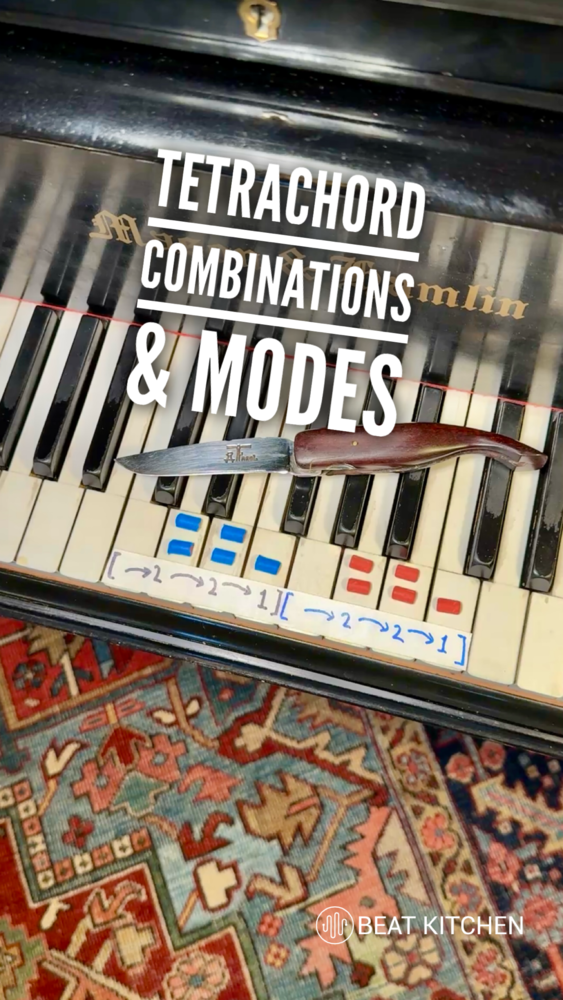Music theory books are filled with more scales than most people know, and certainly more than most people need to worry about. But what if, instead of memorizing the scale, whole step, whole step, half step, whole step, whole step, whole step, half step, you were to cut it into two groups of four notes. Each group of four notes is a tetrachord.
Instead of a whole tone, we counted two semitones, two semitones, and one semitone. To state the obvious, that equals five. Counting up from the bottom note, your classic tetrachord is going to always be four notes, adding up to five semitone intervals.
This is the 2-2-1 tetrachord, or the major tetrachord, and the major scale is made of two of them separated side by side by a whole step. The minor tetrachord is 2-1-2, and you’ll notice it still adds up to five. The upper minor tetrachord is 1-2-2, still adds up to five.
But the fun begins when you start to mix and match. For example, let’s combine the minor tetrachord with the major tetrachord. That scale is called the melodic minor.
You can start redistributing the tetrachords. Take one from here and put it here, and you end up with 1-3-1. The harmonic tetrachord, minor on the bottom, harmonic on the top, gives you the harmonic minor scale.
Not only can you come up with all sorts of interesting scales this way, but each one of them has seven of their own modes. Here’s the fifth mode of the harmonic minor. It’s also called the Phrygian dominant.
It’s really useful over a dominant chord with a flatted nine. But you don’t need to remember the name. It’s 1-3-1, 1-2-2, and it hits all of the critical chord tones, along with some interesting colors along the way.
All of these scales and their modes are useful even outside of the note they start on. Just make sure they hit the inflection points of the chord. Take this E minor melodic scale.
Look how it crosses this Eb7 altered chord. Flatt9, major and minor thirds, flat and sharp five, and the dominant seven. The bottom tetrachord is 1-2-1, and even though we started with tetrachords, the top tetrachord is now no longer adding up to five.
It’s 2-2-2, which is a whole-tone scale. The point is you can start your scale thinking in a modular way with tetrachords, mix and match them and apply them in different places and come up with all sorts of interesting results. So get out there and play with some tetrachords and share one with someone who belongs in a Beat Kitchen class.

